
Haul road maintenance practices play a huge role in the overall productivity and safe operation of quarries. According to Nick Kyriacos, ADT product marketing manager at Bell Equipment, good haul road maintenance in a quarry operation is hugely important because a truck’s suspension system can only do so much to deal with poorly maintained roads.
“Two things generally occur as a result of poorly maintained haul roads – firstly, the operator slows down because of the discomfort, which directly results in reduced productivity. There is also accelerated wear on components, which leads to unscheduled and unnecessary downtime, thus negatively affecting productivity,” says Kyriacos.
While a strong relationship exists between haul road maintenance and economical, safe operations at quarry sites, the design aspect of haul roads cannot be underestimated. A good quarry haul road design, says Caterpillar senior quarry specialist Peter-Valentin Sauter, means that trucks can travel in safe conditions at the most fuel-efficient level and rated speed with target payload, in all weather conditions.
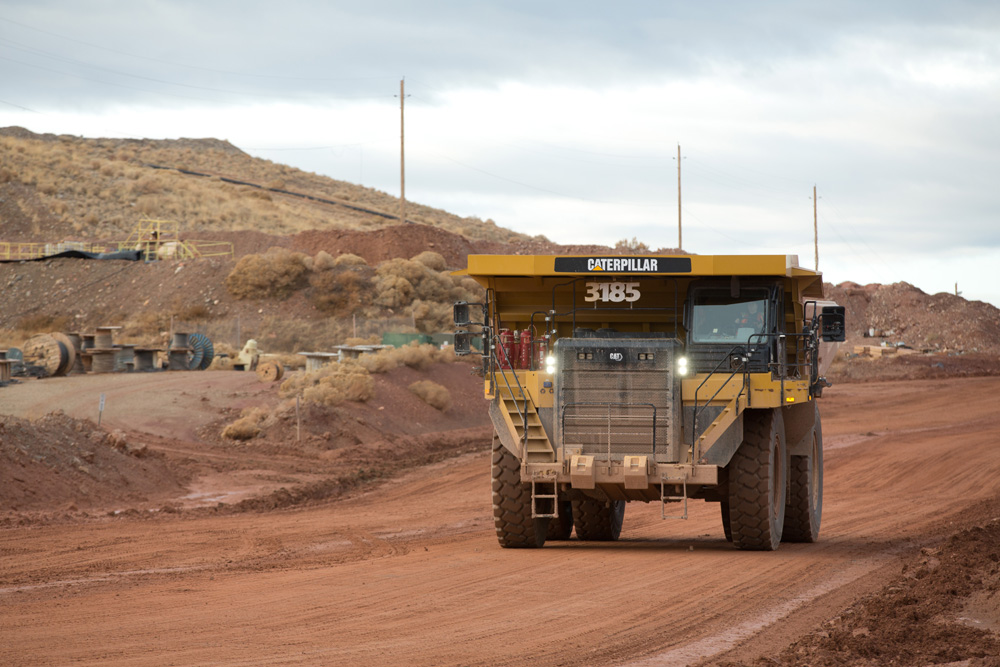
“Crowned straight sections, super-elevated curves and safety berms with drainage ditches on both sides that are constructed with well-graded sub-base material for lower rolling resistance are the hallmarks of a quality quarry haul road,” says Sauter.
On most African quarries, especially in South Africa, he says, two-way traffic must be accommodated. Three-truck width is preferred for travel on straight haul road sections, day or night. This rises to at least four-truck width when applied to corners and bends. Such distance allows for safe and constant speed of loaded and unloaded trucks with optimum operator visibility, including the avoidance of blind spots in bends and at the top of the grade.
“A correct haul road width is vital. In reality, there will be areas where the ideal truck widths are not achievable. In these instances, truck speeds have to be slowed down and speed limit signs be introduced and thoroughly policed,” explains Sauter, adding that safety berms measuring at least one half of the wheel height of the largest trucks in the fleet are usually a must for guarding haul roads.
To facilitate water drainage, he adds, well-designed haul roads are crowned in the straight sections. About 2% is sufficient for most regions, although 3% might be required in higher rainfall areas.
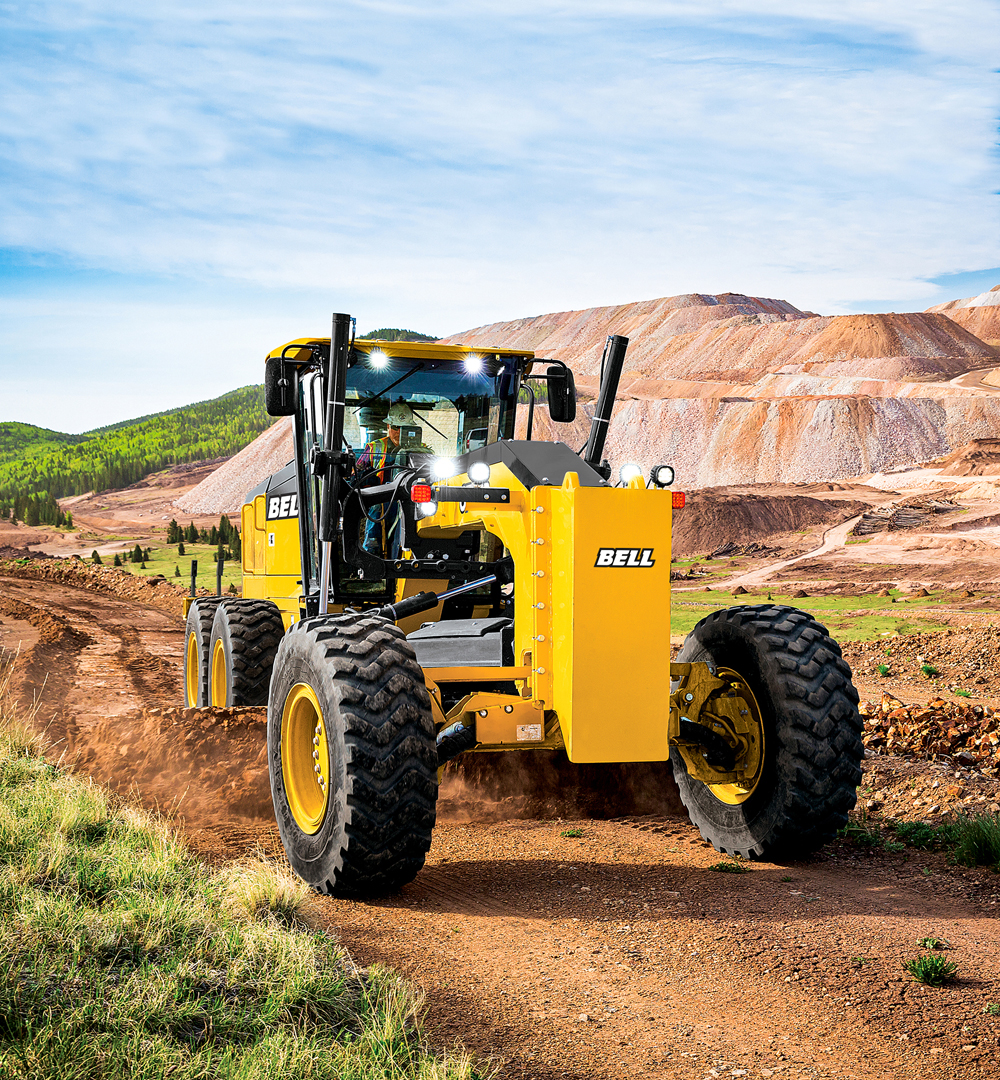
Graeme Armstrong, sales representative at Komatsu South Africa, believes that the first step in enhancing productivity at a quarry site is the optimal initial design and construction of haul roads, as the maintenance that follows will just be upholding a flawed design if the haul road was incorrectly designed and constructed in the first place.
“Ideally, keep gradients below 8%. This will reduce load transfer which can cause uneven loads on certain tyre positions, as well as reduce slippage [thus improving fuel consumption] and spin cuts [thus reducing cut separations of tyres and premature failure],” he says.
Poor design of corners and cut backs, adds Armstrong, can lead to excessive braking and acceleration, forces which cause increased tyre wear and heat build-up. He advises that haul road design should allow for wide turn radius where possible and adequate camber if achievable. This can allow for a more even cornering speed and improved productivity and reduced fuel consumption.
Haul distances are also important, says Armstrong, adding that consideration must be given to the tyres which will be used and their tread compounds. Incorrect TKPH (tons kilometres per hour) can lead to heat separations and premature tyre failure.
Unwelcome and potentially costly extreme tyre-wear-tread separation can be generated by the high lateral tyre forces trucks generate when negotiating bends in haul roads, says Caterpillar’s Sauter. This can be partially countered by super-elevation: the difference in height between the inside and outside edges of the banks of a road’s bed.
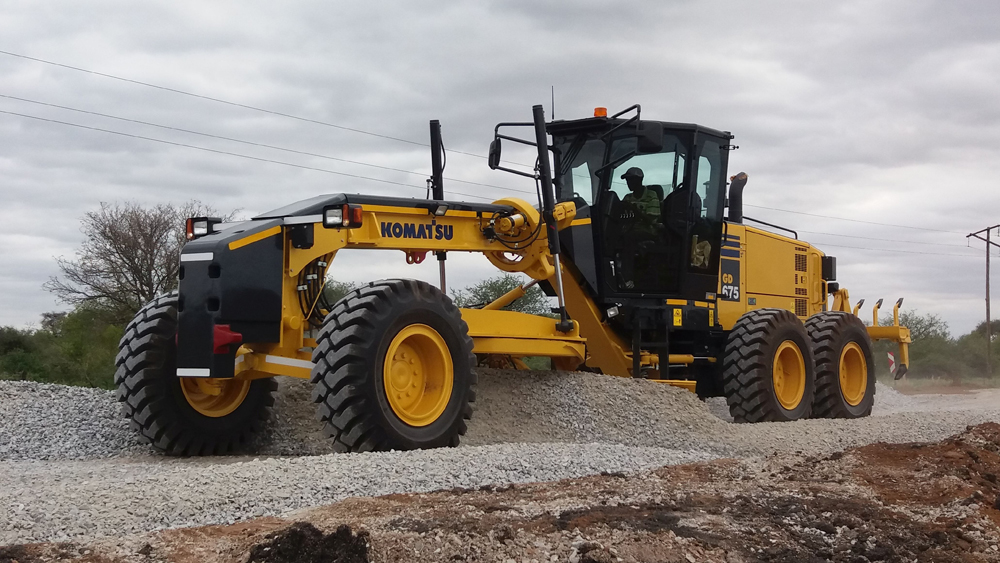
“Well-designed, super-elevated bends ensure the load is correctly positioned over the tyres and truck chassis, lowering side forces on the tyre casing and leading to less scuffing and wear,” he says.
“Furthermore, super-elevation leads to more consistent and safer truck speeds. Consistent truck speed maintenance allows for optimum fuel efficiency, since less braking and re-acceleration is required. Super-elevation levels are based on the bend’s radius and the speed at which it is negotiated,” adds Sauter.
It’s key to achieve the right grade for each haul road when hauling uphill, adds Sauter, as it impacts on where the load rests on the tyres, while it reduces rock spillage. The ideal ratio is for 33% of the load to be in the front of the truck and 66% in the rear, and the perfect grade is 8 to 10%.
“Consistent grades are critical for cutting transmission up/downshifting, lowering fuel consumption and raising drivetrain component life. Because they start at the loading face and end at the dumping point, the haul roads’ load and dump sites should be smooth, without any rocks and potholes. Appropriate design of the bench and dump sites can prevent spillages and wear and tear on the tyres, while minimising the risk of accidents,” he adds.
The greatest risks to cut and damaged tyres, says Sauter, are rocks, debris and potholes in the haul road. Therefore, ensuring haul roads are rock- and debris-free should be a priority on all quarry sites to optimise tyre life and safety. Meanwhile, airborne dust and debris can reduce operator visibility and therefore affect site safety – for this reason the need for efficient dust control cannot be ignored.
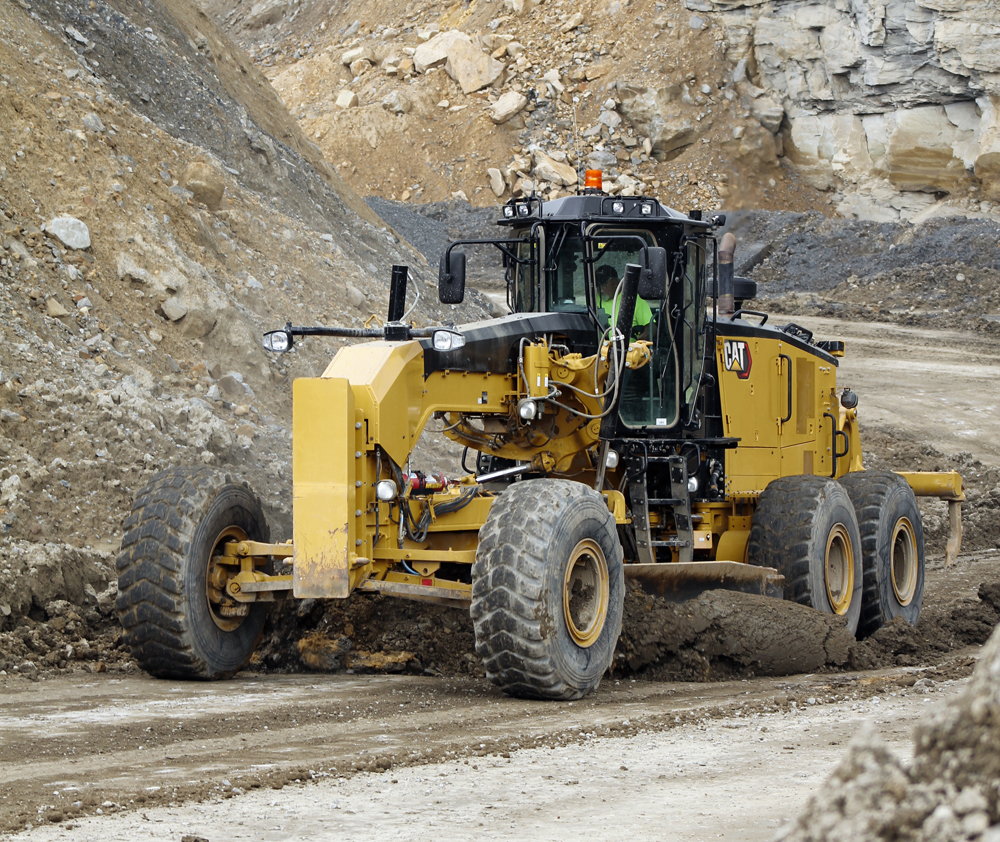
Commenting on how haul road maintenance affects tyre life at quarries, Armstrong says improved maintenance can reduce premature failures and vastly improve the tyre cost per hour, improving the percentage of tyres removed fully worn.
He refers to a survey conducted at one mine, which found that 44% of tyres were removed because of cuts (premature failure); 29% were removed for impact fractures (premature failure); 7% through tyre wear (fully utilised); and 20% removed prematurely for other reasons.
Overwatering of roads washes out fines, he says, and can cause rutting of the surface and deterioration of the road base, thus creating an uneven surface. This can result in pot holes and hollows which fill with water and, in turn, increase the chances of tyre cuts as the water acts as a lubricant.
“Uneven surfaces increase wear on all parts of the machine assembly and suspension. Haul roads clear of debris reduce premature failure of tyres. Most cuts and impact fractures occur around loading and dumping areas, as well as in areas with steep gradients, sharp cutbacks and turns,” says Armstrong.
“Utilising a combination of tracked [Komatsu D65EX-16 or D85EX-15R] and wheeled dozers [Komatsu WD600-6], as well as motor graders [Komatsu GD675-5 or GD825-2A mining grader] to clear and maintain loading, dumping and haul surfaces will reduce the number of premature failures due to tyre cuts, impacts, and cut and tread separations,” he adds.
Armstrong agrees that failure to maintain drainage can lead to water pooling, damage to the road substructure and costly reconstruction. Un-watered haul roads, he says, can result in dusty conditions. Besides the environmental impact (especially where a quarry is located close to urban areas), poor visibility adds to safety risk. Furthermore, the dusty conditions can result in increased maintenance costs, with air filters or oils needing to be exchanged more frequently.
According to Kyriacos, the two important aspects in haul road maintenance are to keep the road as smooth as possible and to remove material or rocks that fall from the haul trucks. This is because the rougher the road, the more flexion occurs in the tyres. This leads to increased heat building up in the tyres, resulting in a faster wear rate. If trucks are driven on smooth, well-maintained roads, the abrasion effect of the road is minimised and there is less wear from tyre scuffing.
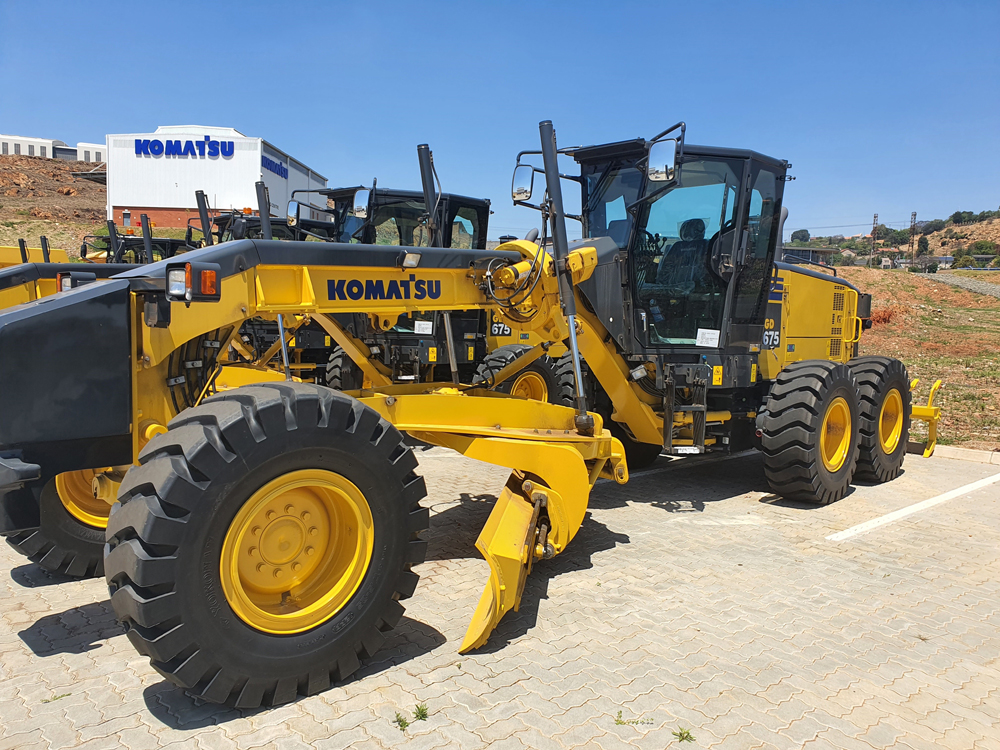
“If rocks are not removed as part of road maintenance, it may lead to premature tyre failure through side wall cuts, and this can be extremely costly. For example, an operation may budget 6,000 hours from a tyre, which means they take the price of the tyre and capitalise it over the 6,000 hours to get to a running cost per hour. The operation thinks it will operate at, say, ZAR10.50 per hour for those 6,000 hours but when there is a premature failure, the tyre is replaced, and they start from scratch again at 6,000 hours and have to outlay for another new tyre. It increases the cost of operation substantially,” explains Kyriacos.
Good haul road maintenance practices by their very nature reduce overall operating costs. With poorly maintained roads, says Kyriacos, operations will suffer accelerated wear and strain on their machines, which could lead to additional downtime and impact on productivity and operating costs.
Tyre costs are a significant portion of owning and operating costs, he adds. “It varies according to regions and applications, but the hourly cost of tyres typically exceeds 10% of the total cost per hour over 10,000 hours.”
Although not a primary issue, adds Kyriacos, there is also potential for good haul road maintenance practices to influence fuel consumption. “On a long, smooth road, the operator is able to keep a consistent speed for more economical fuel burn, whereas on a poorly maintained road they will need to continuously slow down and speed up, which definitely increases fuel burn,” concludes Kyriacos.














